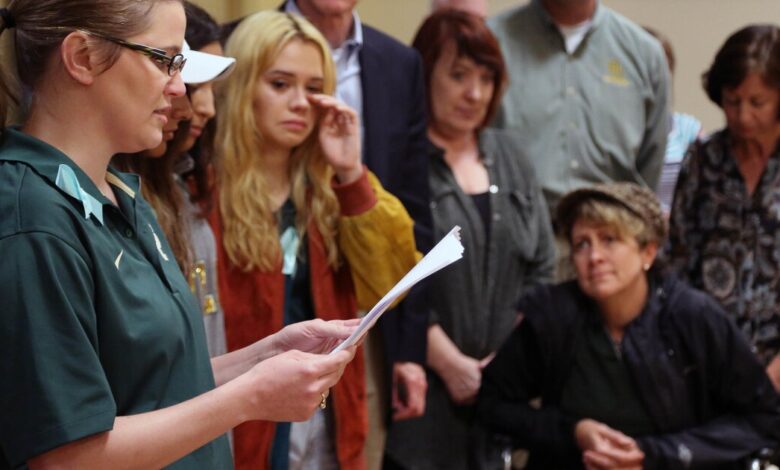Multimillion-Dollar Payouts Are on the Rise in Sexual-Misconduct Lawsuits. Colleges’ Insurers Have Had Enough.

[ad_1]
After the rulings are handed down in sexual-misconduct lawsuits against colleges, a second legal battle quietly begins.
Determining who pays the legal fees and settlements — which, in the most sweeping cases, can total hundreds of millions of dollars — often leads to behind-the-scenes squabbles as colleges and their insurance carriers parse general liability policies.
That tension is playing out between Baylor University and Lexington Insurance Company, which sued in January to stop covering claims against the university in a vast sexual-assault scandal.
In higher education, insurers and institutions have typically been a united front: Colleges pay premiums, carriers pay up after a crisis. Now, cracks in the relationship are forming, especially as more sexual-misconduct lawsuits are lodged and settlements grow larger. Insurance companies and colleges are increasingly concerned about risk — both financial and reputational.
In response, many insurers are simply walking away from higher-education coverage. Those that remain are taking precautions to avoid the financial fallout of sexual misconduct, putting the burden of legal fees and payouts more squarely on the shoulders of colleges.
The Penn State Effect
The tipping point came in the case of the former assistant football coach Jerry Sandusky at Pennsylvania State University, which led to one of the first public rifts between a college and its insurer.
The abuses perpetrated by Sandusky involved hundreds of victims over the more than four decades he was employed by Penn State. Thirty-two victims sued the university for damages, and settled for $93 million, as reported by PennLive.
But neither Penn State nor its then-insurance company, Pennsylvania Manufacturers’ Association Insurance, wanted to pay.
In 2016, after a three-year court case, a judge ruled on the “interpretation” of the contracts between PMA and Penn State — in essence, how the university’s insurance policies could be triggered by claims of sexual misconduct, and if the policies applied to Sandusky-related claims.
Complicating the case was that, as is typical, Penn State’s insurance policies often changed year-to-year, and many victims were abused by Sandusky multiple times over several years. The judge’s opinion stated that claims made by each victim would trigger the policy of the year when the first incident of abuse occurred.
But for some years, the university’s insurance coverage didn’t apply in certain situations — letting PMA off the hook. Penn State’s insurance policies in the mid-1990s, for example, did not cover sexual abuse or molestation. After 1998, PMA did not need to cover Penn State because the policies no longer applied when university officials first learned about Sandusky’s abuse and did not act to prevent it. And, beginning in 2005, only one claim related to Sandusky could be filed each year, according to the policies.
While the public does not know how much of the multimillion-dollar settlement was paid by Penn State or PMA, the case touched off a new era in higher-ed insurance, said Kyle D. Logue, a professor at the University of Michigan Law School who’s an expert in insurance law.
As a result, general liability policies are narrowing to exclude sexual abuse, said Logue. This pattern is common in insurance, he said: As insurers realize that certain risks are extremely large, or largely under the control of the institution that’s being insured, exclusions are added to protect against that risk.
Sexual-misconduct coverage in general liability policies might only be approved if the colleges meet certain requirements. United Educators, an insurance company that works exclusively with schools and colleges, requires applicants to have policies in place on sexual-misconduct prevention and ways to report and investigate incidents. Other insurers simply no longer offer sexual-misconduct coverage.
Claiming Otherwise
With Penn State in recent memory, Lexington Insurance is following a similar playbook at Baylor and hoping to pre-emptively steer clear of a big payout. The pending sexual-misconduct lawsuit brought by 15 former students alleges that the plaintiffs were sexually assaulted by other students and staff members between 2004 and 2017 and that the university didn’t act to protect them.
At Baylor, as at Penn State, the insurance policies were triggered for the year an incident occurred; a policy from 2014, for example, was triggered by a claim filed two years later.
Filed on January 10, Lexington’s lawsuit alleges that Baylor’s policies didn’t cover sexual misconduct between 2012 and 2016, when the majority of the alleged sexual abuse occurred. For the remaining alleged assaults, the sexual abuse does not meet the definition of an “occurrence” — namely, an accident — because the university may have failed to prevent the incident under the federal gender-equity law known as Title IX, Lexington argues.
(A spokesperson for Baylor University said the university “continues to work with Lexington regarding previous claims” but switched insurers for its general liability coverage “a few years ago.”)
Amid such high-profile scandals, many insurers want to minimize their risks, opting for a different approach known as a claims-based policy. Under that system, when universities file claims with their insurer, that triggers the current year’s policy, which often no longer covers sexual abuse — no matter what year the misconduct occurred.
“The shift to claims-made policies provides more general protection for the insurer than the specific exclusion does,” said Logue, in an email response to The Chronicle.
United Educators maintained its occurrence-based coverage because it is “preferable for our members,” according to a spokesperson.
Striking Out on Their Own
As outside insurance companies become more wary of higher ed, many colleges are joining the ranks of corporations and creating a new structure to insure their risks.
That new structure — known as a captive insurance company — is a separate legal entity, but the university is involved in its main operations, including creating policies and managing claims. Yale University, the University of California system, Rutgers University, and the University of Minnesota are among the colleges that self-insure with captive insurance companies.
Michigan State University created such a company, called Lysander Series, after settling a lawsuit with the 300-plus victims of Larry Nassar, the former university sports doctor who abused women and girls under the guise of performing medical treatment. According to reporting from The Wall Street Journal, Michigan State rejected a policy with reduced coverage from its longstanding insurer, United Educators, and created Lysander instead.
In 2019, at the time of its creation, a Michigan State spokesperson told the Journal that the policy from Lysander Series “broadly excludes insurer liability for sexual misconduct.” A United Educators spokesperson said the company does not “publicly disclose member or insurance policy details.”
MSU also took to court its 13 former insurers to cover the $500-million settlement with Nassar’s victims. As of last September, Michigan State had recouped around $100 million, according to the Lansing State Journal. In November, a judge found that the American Physicians Assurance Corporation was not obligated to pay $31 million for costs related to the Nassar case under a 2000-2001 insurance policy.
Sealing the Cracks
The Nassar case was “one of the worst of the worst,” said Bryan Elie, vice president for underwriting at United Educators.
But the conflicts in college insurance are only going to increase as more victims come forward about abusive behavior and sexual-misconduct lawsuits proliferate, experts say.
In 2014 a report compiled by United Educators of publicly available cases involving sexual misconduct listed one case that topped $1 million. In 2022 that number jumped to five. Settlements within the University of California system and at the University of Southern California topped $615 million and $852 million, respectively.
“Those trends have just been growing and growing,” said Kimberly Pacelli, a partner at the Title IX consulting firm TNG.
Invariably, while conducting trainings for colleges’ Title IX coordinators, Pacelli notices that administrators realize the nature of their work is inherently risk management.
“We always recommend that [Title IX coordinators] interface with their finance and administration folks to really understand who’s their insurer and what the insurance covers,” said Pacelli.
Meanwhile, insurers are getting more invested in training colleges on Title IX policies to further minimize their risk. “From our perspective, our goal is to help the institution,” said Elie. He added: “Don’t let a serial predator take root.”
[ad_2]
Source link






